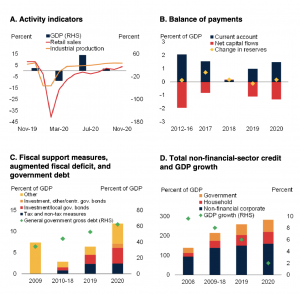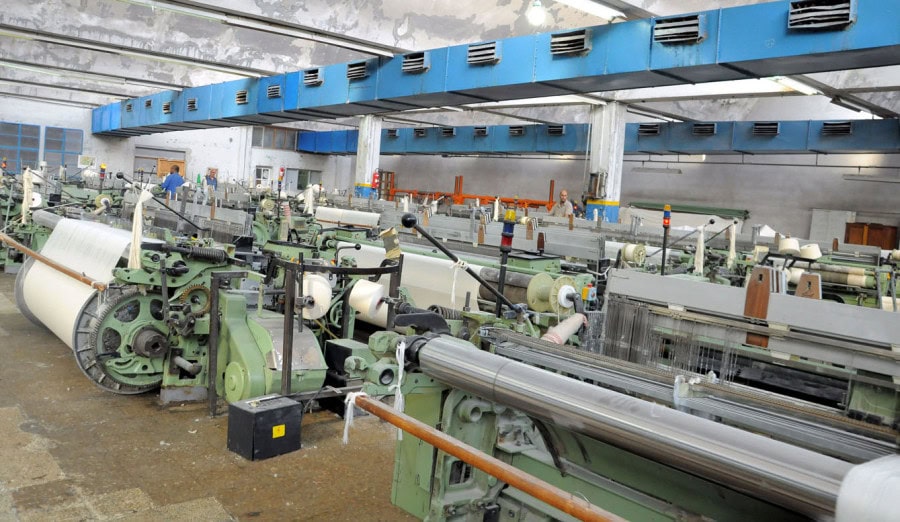Hassan Daud Butt
CHINA’S strength as the factory of the world and the key driver of global economic growth is visible as the world enters 2021 with new hope to combat the pandemic challenge through vaccine and bring growth and prosperity. In a country where per capita income has considerably increased and the New Year speech of President Xi echoed these sentiments when he said “In 2020, China made the historic achievement of establishing a moderately prosperous society in all respects and achieved decisive success in eradicating extreme poverty”.
In the post-pandemic time, China has also taken the lead in achieving economic re-growth with the World Bank and IMF forecasting GDP growth by 7.9 per cent in 2021. According to the new 5-year plan starting in 2021, China will be able to eradicate extreme poverty, accelerate technology and high-quality growth, invest a sizable share of its GDP on culture and sports development and encourage Chinese companies to internationalize and pursue global expansion.
Most interestingly, experts believe that by 2030 (the planned completion time of CPEC projects), China will have 6G around 1000 times the speed which is available today and with that level of connectivity and high-speed transportation across all modes through which China will be able to replenish goods, works and services with far more sustainable speed and unprecedented scale.
The main sectors and industries benefiting this economic transformation include high-speed railways, electric and hybrid cars, renewable energy generation, movie production, online gaming, high-end communication, quantum computing, 5G revolutions in agriculture, high-end logistics and transaction services, healthcare, traditional Chinese medicine, biomedical, telecommunications, energy, robotics, digitalization, renewable electricity producers and several more avenues.
According to the World Bank’s report, China’s next transformation is well underway and a “New Economy” is emerging, all set to make a global impact through innovations and economic initiatives leveraging its demographic and economic diversity. China’s GDP is $14.3 trillion and these numbers in themselves give us a reason to promote trade and industrial linkages with China through CPEC or any opportunity that exists outside the great initiative as the important phase leading to 2030 is likely to be transformational for the industrial growth, development of Gwadar, regional trade, industrial and investment landscape in Pakistan.

Through CPEC development, it is also expected that by 2025 processing and manufacturing industries will be developed including setting up of the priority SEZs and by 2030, ML-1 close to being fully operational and the endogenous mechanism for sustainable economic growth will be in place.
While there is a high level of misunderstanding and lack of knowledge of China in the West there is some dearth in our understanding of how China is growing and will shape up by 2030 and why we need to attract Chinese FDI fast and increase the level of business to business interaction especially in the areas of e-commerce, technology, real estate, hospitality, healthcare, low-cost housing, media & entertainment and telecommunications.
For that to happen and for us to address the challenges and harness the opportunities and set the future directions to attract FDI, it requires a new industrial and investment development path that promotes complementarity, consistency and high level of coordination at all levels.
This path is not going to be easy considering the hard work and dedication like China where the entire generation exhibited in their pursuit of prosperity. Therefore, we need to open our imagination and interact with the Chinese business community, academia and government officials and discuss possibilities for Pakistan’s industrial development in the Chinese growth.
The recovery of global FDI will probably start to happen by end of 2021 opening opportunities for investment and development and giving us time to prepare suitable investment promotion strategy charting a sustainable path to attract multinationals which may look to diversify and relocate to mitigate.
We, therefore, need to address the challenges and harness the opportunities that are likely to arise from the future directions of global FDI through novelty in our investment strategy to attract Chinese and other investment. As a stepping stone, our standing of EODB has witnessed improvement and the government including provincial governments is crafting policies favourable to market transactions, to attract foreign direct investment, protecting property rights to encourage entrepreneurship and promoting sustainable knowledge investment.
Following the same, Khyber-Pakhtunkhwa Government has recently approved its “Industrial Policy 2020” and Trade & Commerce Strategy, which will pave the path for sustainable industrialization in Rashakai SEZ and other areas and will generate economic activity. These policies and strategies make an attempt to prioritize and incentivize trade and investment in industrial sectors and create a “Pull Factor” for investors to form joint ventures with local investors, invest in utilizing indigenous natural resources, bring new technology, invest export-oriented industries and add value to local products.
In order to accrue the desired outcome fast, the industrial cooperation under CPEC needs to remain consistent and in line with national agenda of economic growth, employment generation, regional connectivity and rapid industry and trade development leading to more sustainable investment in the green and blue economy. The Special Economic Zones (SEZs) and its development activity corridors are essential elements of the logistics system.
Therefore, in these crucial times, we also need to expedite the push for improving the business environment in an effort to spur economic development and for this, we need to target specific sectors with improving efficiencies, establish one window (at Federal and Provincial BoIs) and promote market competition by crafting attractive policies that are flexible for any novel business venture through a government-industry dialogue as the complicated institutional arrangement is often interpreted as a commercial risk.
Secondly, accelerate the country’s efforts to strengthen our human capital to prepare them for supporting the labour seeking investment by increasing annual per capita expenditure on education and vocational training to address the CPEC Project and its industrial cooperation. Empirical data shows that when China started its path to attract foreign direct investment under the leadership of visionary Deng Xiaoping the main factor was the low wage yet efficient labour.
Thirdly, bring an unambiguous regulatory framework through investment law. Fourthly, start a 5-year agricultural cooperation action plan with China involving provinces. Fifthly, conduct joint roadshows in China and at trade capitals and lastly, accelerate an innovation and research drive by developing China-Pak academia linkages and perhaps going the Deng’s way when he said in his speech, “Emancipate the mind, seek truth from fact, and unite as one to face the future.”










